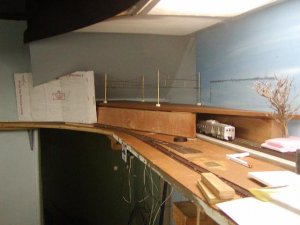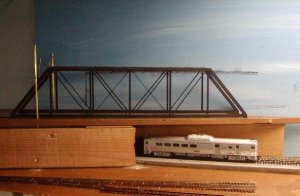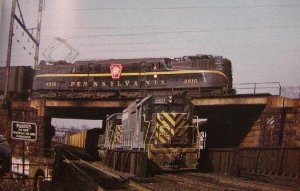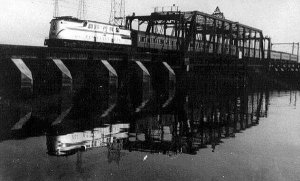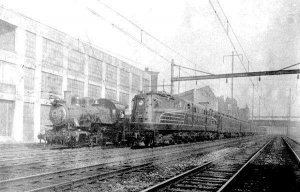Chris (interurban) and I have been discussing catenary design on and off now for what? A year now, Chris? Seems like it, anyway. When it comes to catenary design, there is a complete lack of information for the modeler. This is not the same as trolley overhead. Catenary is used for heavy traction equipment and is still in use today in some parts of the country, notably along the old South Shore Line and the Northeast Corridor. It's difficult to really understand the purpose of the maze of wires, hangers, and insulators, especially when there are towers, messenger wires, tie-back or pull-back cables, designs just for curves, etc. And, to make it even MORE complicated, there were different design types, too. Here in Connecticut, for example, I can study the NYNH&H RR's original 'triangular' catenary with 'flying hangers'. I've had my face in Don Ball's great book on the Pennsylvania RR looking at photos of catenary getting ideas from there. The PRR and DL&W catenary is both similar in design and both differ from that of the New Haven RR! I intend on designing and building my own catenary for my layout and NOT to power my locos. It will be unpowered and will be as close to prototypical as possible. In order to do this, I'm going to design and build two towers with catenary suspended between them over a double track mainline as a diorama. As I begin, I'll design the hanging system complete with insulators, tranmission lines, hangers, etc. I'll scratchbuild the towers, suspension lines between the tower legs, and hangers. For the actual catenary, I'll use the Model Memories pre-fab catenary. This will take a bit of time, but I'll supply the plans and progress photos as I go along. Of course, I welcome all suggestions and input from other traction modelers! :thumb:
Russ
Russ



